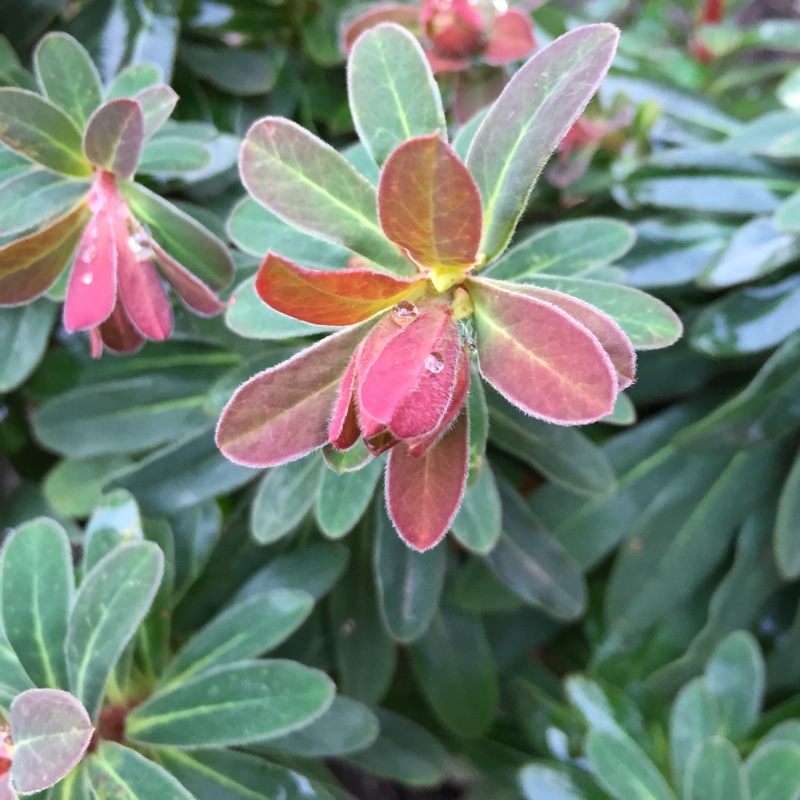
Euphorbia x martini 'Baby Charm'
Martin's Spurge 'Baby Charm'
Martin's Spurge (Euphorbia x martini) is a dwarf evergreen perennial which is a cross between Euphorbia amygdaloides and Euphorbia characias subsp. characias. It has rounded mounds of medium narrow oval leaves green leaves, often tinged purple, on quite stiff long stems in greenish/grey. Bracts form and are usually lime green in colour, with tiny red flowers in the centre of each bract. Flowers are usually long lasting in late spring. It grows well in areas of dry shade, although can tolerate some moisture providing it is in a well drained soil. It also does well in full sun. It is evergreen and suckering and if left unchecked it can become invasive. 'Baby Charm' has bronze to green foliage. Lots of little light green and yellow bracts with red flowers in the centre appear in Spring through to Summer.
Contributed by @justin
-
Full sun to partial shade
-
Very little water
-
Full Frost Hardy: 5F (-15°C)
-
Free draining
Common name
Martin's Spurge 'Baby Charm'
Latin name
Euphorbia x martini 'Baby Charm'
type
Evergreens
family
Euphorbiaceae
ph
5.0 - 7.5 Acid - Neutral
Plant & bloom calendar
-
Best time to plant
full grown dimensions
 0.50 M
0.60 M
0.50 M
0.60 M
Euphorbia x martini 'Baby Charm'
Martin's Spurge (Euphorbia x martini) is a dwarf evergreen perennial which is a cross between Euphorbia amygdaloides and Euphorbia characias subsp. characias. It has rounded mounds of medium narrow oval leaves green leaves, often tinged purple, on quite stiff long stems in greenish/grey. Bracts form and are usually lime green in colour, with tiny red flowers in the centre of each bract. Flowers are usually long lasting in late spring. It grows well in areas of dry shade, although can tolerate some moisture providing it is in a well drained soil. It also does well in full sun. It is evergreen and suckering and if left unchecked it can become invasive. 'Baby Charm' has bronze to green foliage. Lots of little light green and yellow bracts with red flowers in the centre appear in Spring through to Summer.
Planting young plants
From Early Spring TO Early Spring
As a general rule, Spurge requires well-drained soil in full sun. They will tolerate shadier conditions, but none of the family is fussy about soil condition. They even thrive in very poor soils and can tolerate periods of drought.
Propagation
From Early Spring TO Early Spring
Spurge grows quite well from seeds sown indoors in pots. You can propagate Euphorbia more quickly and easily by gathering up the “volunteers” around an established plant. You may also root stem cuttings in a soilless medium, such as peat. Keep them lightly misted and enclose the pot in a bag to keep moisture in. Let the pot breathe once a day for an hour, so the soil does not mold. Once the cutting has rooted, you can pot it in regular soil or plant outdoors in moderate climates. One of the more important growing tips for Euphorbia is to let the stem cutting dry for a few days before planting. This allows the sap to form a callus on the cut end and prevents rotting.




















